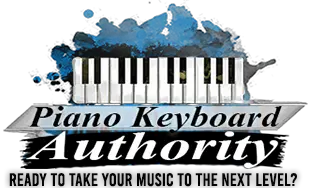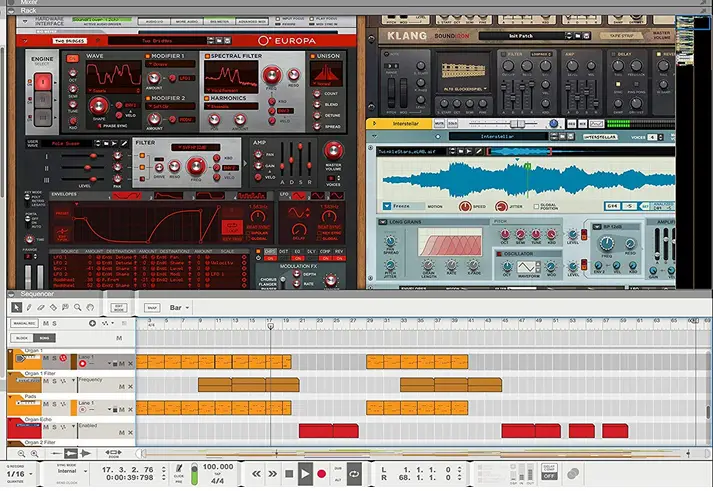When it comes down to music production, the best music sequencer can make a difference on song arrangement. Not only does a great music sequencer create a higher-quality sound but also adds more diversity and uniqueness to your music other than generic sounds that you’ll hear on the radio. Furthermore, a music sequencer helps you add your own flavor to your songs.
Table of Contents
What Are Sequences In Music?
Before we get into music sequencers, you might want to ask: what is a music sequence? Basically, a sequence is an arrangement of notes that let you create music. It’s kind of like creating a music sheet, but instead of writing notes on a staff, you are putting square notes on tracks that you can put in layers to create your arrangement!
Sequences can make up part of the recording or nearly all of it. Most bedroom producers who don’t have a live instrument, such as a guitar, violin or flute, use music sequences to emulate such instruments in their DAW or digital audio workstation to accompany their track or song. You can also put synthesizer sounds in there to make the song spicier and more personalized.
What Does A Music Sequencer Do?
A music sequencer, usually incorporated with a DAW (mentioned above), has many functions, but the main and prominent ones are the following:
1. Create a melody, chord or riff pattern
A music sequencer basically helps you to create any pattern that you like. Whether it’s a string chord, a music box melody or a violin solo, a music sequencer usually has a huge library for you to easily emulate whatever instrument that you’d like.
2. Enhance your initial instruments
For example, if you already recorded a piano or guitar track, you can add a chorus effect or double it to create depth and thickness to your song. Part of music production is to process your raw instrument recordings and make them more professional-sounding, which can also be done in a sequencer.
3. Add instruments you don’t have (or can’t play)
Like we mentioned above, even if you don’t have a violin or cello, you can use the music sequencer and its VST plugins (or even soundfonts) to emulate such instruments. This is why many EDM producers like Clean Bandit are able to produce songs like “Symphony” without many problems!
4. Work on MIDI files
Nearly all music sequencers have the capability to work on MIDI (the only probable exception would be trackers that sequence notes vertically). You can import, create, edit and export MIDI files to your heart’s desire.
5. Add effects to the notes
Like with MIDI controllers, you can add pitch bends, vibrato, panning, velocity and other effects to your notes, which is one of the wonders of music sequencing.
6. Layer vocal and music tracks properly
Music sequencers are more than just notes – you can also arrange vocals and music tracks properly there so that they can be in perfect (or near-perfect) sync, at most.
7. Sample or chop riffs for re-arrangement
Like your old-school drum pad, music sequencers excel at sampling anything under the sun. Whether it’s a 10-second voice clip from YouTube, a drum riff you’ve created with pots and pans in the kitchen or the good-old boom-boom-clap sample from Queen’s “We Will Rock You”, music sequencers can do it all.
Best Music Sequencer For Mac
For Mac users, we’d definitely recommend the ever-famous FL Studio from 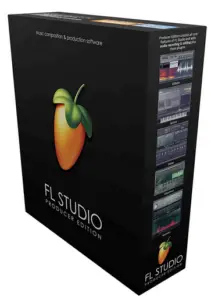 Image-Line. Simply put, FL Studio Mac and Windows versions are both very easy to work with, especially for those who are still new to music production.
Image-Line. Simply put, FL Studio Mac and Windows versions are both very easy to work with, especially for those who are still new to music production.
FL Studio has great compatibility with a lot of VST plugins, so you can work with different instruments and programs other than its built-in stuff. Mixing is made super easy in FL because of the simple FX assignment. You can also easily sequence anything on the tracks – from simple drum loops to using the piano roll to make piano arrangements!
Its browser is also organized well so you can get your stuff together and make bulk projects easier, especially if you’re working professionally as a commercial producer. Automating effects are also simplified with a few drags and drops on the mouse.
Since there are a ton of FL tutorials on YouTube, learning this music sequencer will probably be a breeze for you! Famous producers who use FL Studio include Madeon (his project file screenshots are massive!), Porter Robinson, Avicii, Martin Garrix, Afrojack and many more.
Music Sequencer Software For PC
For Windows users or the PC, both FL Studio and Propellerhead Reason 10 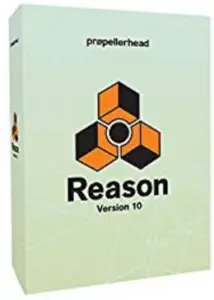 are great starters for music production. While we’ve already covered the basic features of FL above, Reason is a pretty good addition to your arsenal if you already have FL in your PC.
are great starters for music production. While we’ve already covered the basic features of FL above, Reason is a pretty good addition to your arsenal if you already have FL in your PC.
As a standalone music sequencer, Reason has a ton of presets, loops and instruments that you won’t easily find on FL, such as guitar riffs and strums, which could be useful if you currently don’t have a decent guitar (or don’t know how to play one). However, their mixing and effect assigning can be a little bit confusing for beginners, but not too difficult if you’ve known the basics (and will also give you a little intro to actual sound modules/hardware).
A cool feature of Reason is that it can be connected to FL Studio using the ReWire function (found on FL). Basically, what this means is that you can work on a project on FL then assign its MIDI tracks to the tracks on Reason while it is currently connected to it. This helps you get a perfect balance of the raw instruments of Reason and the synthesizers of FL.
Well-known artists who use (or have used) Reason include Owl City (during his early indie career), Toro-Y-Moi, as well as hip-hop artists like Timbaland and Pharell.
Other Great Music Sequencers
Aside from these two standard music sequencers, there are also ones that are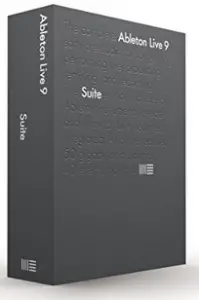 worth mentioning, such as the Ableton Live, which has been used by many artists including Madeon (for his Novation Launchpad) as well as Panda Bear, Diplo, Skrillex, and deadmau5. Like with FL Studio, it has a ton of effects and instruments, as well as MIDI creation capabilities. The cool thing about Ableton is that it has a ton of original sound libraries and that’s why many mainstream producers like it.
worth mentioning, such as the Ableton Live, which has been used by many artists including Madeon (for his Novation Launchpad) as well as Panda Bear, Diplo, Skrillex, and deadmau5. Like with FL Studio, it has a ton of effects and instruments, as well as MIDI creation capabilities. The cool thing about Ableton is that it has a ton of original sound libraries and that’s why many mainstream producers like it.
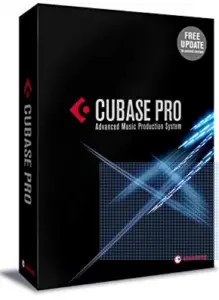 Steinberg Cubase is another great option due to its very clean instruments that sound very professional as well. Cubase is also easy to learn for those who have experience in MIDI sequencers. They have very great acoustic pianos and other raw instruments, which makes Cubase great for general pop music and different genres. The famous Korean hip-hop group BTS uses Cubase in most of the demo videos that they post on social media, in which they integrate with hardware such as the NI Massive.
Steinberg Cubase is another great option due to its very clean instruments that sound very professional as well. Cubase is also easy to learn for those who have experience in MIDI sequencers. They have very great acoustic pianos and other raw instruments, which makes Cubase great for general pop music and different genres. The famous Korean hip-hop group BTS uses Cubase in most of the demo videos that they post on social media, in which they integrate with hardware such as the NI Massive.
Perhaps one of the most famous music sequencers, especially for Mac users,  would be the Apple Logic Pro because of its easy workflow. Artists who use Logic Pro include David Guetta, Calvin Harris, Hardwell, and Disclosure. Logic Pro is also great for those who want to work on MIDI sequencing, and the interface is a little similar to that of Cubase.
would be the Apple Logic Pro because of its easy workflow. Artists who use Logic Pro include David Guetta, Calvin Harris, Hardwell, and Disclosure. Logic Pro is also great for those who want to work on MIDI sequencing, and the interface is a little similar to that of Cubase.
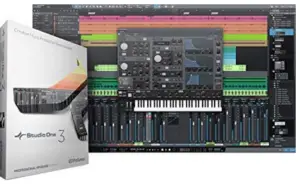 Another one on the list would be the PreSonus Studio One. This music sequencer has a format that’s also reminiscent of Logic Pro and Cubase with an easy interface to work with. It’s also great for working on MIDI scores as well as layering audio tracks easily. While the artists who use Studio One aren’t that famous, they include artists like KATYFR, BLAKE, James Reynolds and producers like Luke Mornay and Aris Archontis.
Another one on the list would be the PreSonus Studio One. This music sequencer has a format that’s also reminiscent of Logic Pro and Cubase with an easy interface to work with. It’s also great for working on MIDI scores as well as layering audio tracks easily. While the artists who use Studio One aren’t that famous, they include artists like KATYFR, BLAKE, James Reynolds and producers like Luke Mornay and Aris Archontis.
Hardware Sequencers
Since we’ve also covered the different software music sequencers, did you know that there are also hardware sequencers? Yes, they can also make music with such hardware by pressing buttons that are assigned to your DAW on your computer or even to your smartphone or tablet’s DAW app.
A notable hardware sequencer would be the Novation Launchpad, as we 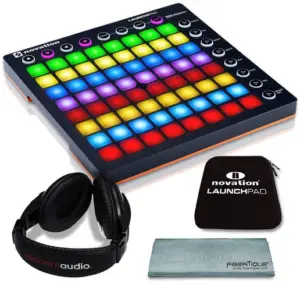 mentioned above. The most prominent user of the Launchpad would be the DJ/producer Madeon, as seen in his mashup called “Pop Culture”, which exploded the popularity for the Launchpad.
mentioned above. The most prominent user of the Launchpad would be the DJ/producer Madeon, as seen in his mashup called “Pop Culture”, which exploded the popularity for the Launchpad.
If you prefer old school stuff, you can also use the good-old 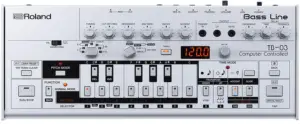 Roland TB-303 and TR-808 for drum sequencing. They have been the craze of the 80s and 90s and it’s easy to create drum loops from them!
Roland TB-303 and TR-808 for drum sequencing. They have been the craze of the 80s and 90s and it’s easy to create drum loops from them!
The NI Machine Mk3 is also a 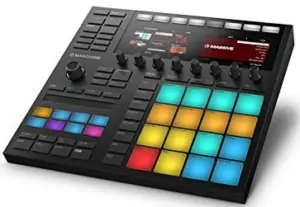 pretty famous hardware sequencer. If you’re an ARMY (BTS fan), you’ve probably seen member Suga introduce how this sequencer works (English translation) for sampling music and creating hip-hop tracks. It’s a little similar to Launchpad but has more controls.
pretty famous hardware sequencer. If you’re an ARMY (BTS fan), you’ve probably seen member Suga introduce how this sequencer works (English translation) for sampling music and creating hip-hop tracks. It’s a little similar to Launchpad but has more controls.
Conclusion
The best music sequencers out there are all very helpful in music production. However, there’s an old saying that “every DAW is just as good as its user”, so you should still consider your techniques and music knowledge when you work on any sequencer. We hope these music sequencers helped you decide on your music production journey!
